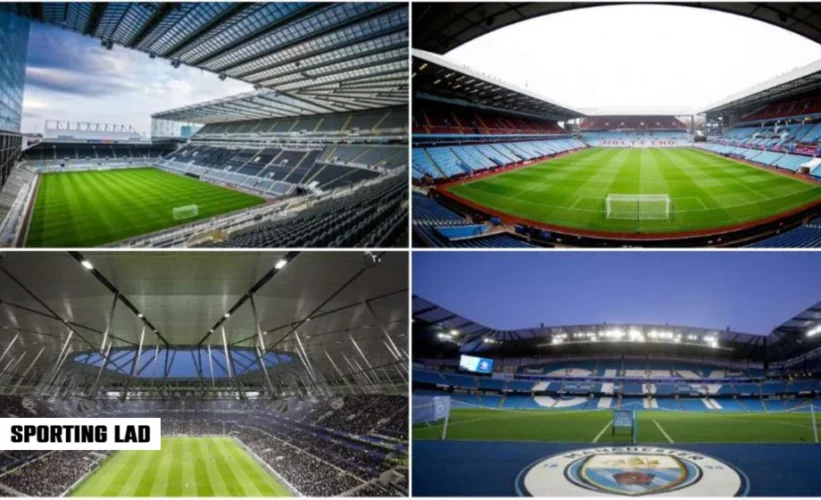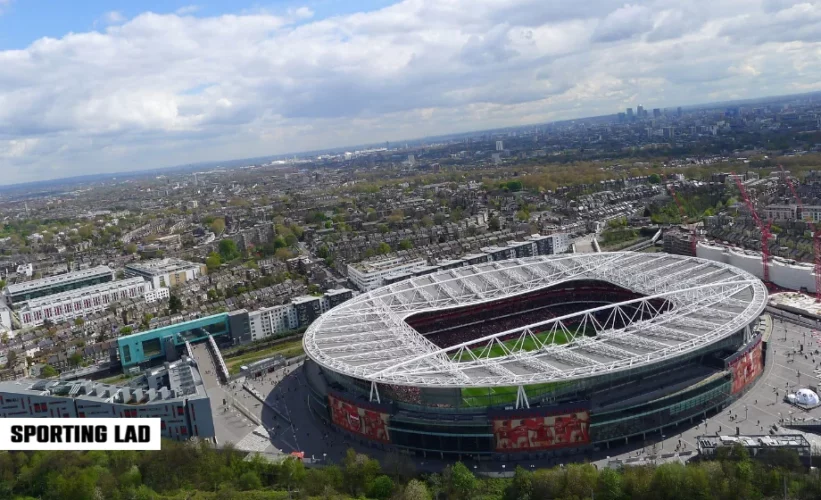Many people consider the Premier League to be one of the world’s most thrilling and competitive football leagues. The Premier League stadiums where games are played have a big following of devoted supporters, which significantly contributes to generating an electrifying environment. In this article, we’ll examine and rank the Premier League stadiums according to their seating capacities, emphasizing their significance and sway over the sport.
A large number of individuals watch Premier League matches from everywhere in the world, and the arenas act as notable images of the rich practice and culture of English football as well as filling in as areas for games. Because of the prevalence of the association and its monetary achievement, huge speculations have been made in arena foundations, making forward-thinking, modern offices.
Factors influencing stadium capacity
The capacity of Premier League stadiums is influenced by a number of elements, ensuring that they can hold a sizable number of spectators and provide an unforgettable matchday experience.
Location
Due to the bigger potential fan population, stadiums found in large cities or highly inhabited areas typically have a larger capacity. Multiple Premier League teams are based in cities like Manchester, London, and Liverpool, which necessitates larger stadiums to meet demand.
Historical Significance
It can be difficult to increase a stadium’s capacity because some of them have significant historical significance. Because these stadiums frequently have distinctive architectural characteristics and significant cultural significance, any adjustments must be made with care to protect their history.
Renovations and Expansions
To boost their capacity, some stadiums have undergone upgrades and additions over time. Improve the entire fan experience, this can entail putting in place cutting-edge facilities, upgrading infrastructure, or adding new seating tiers.
Top Premier League stadiums

Old Trafford – Theatre of Dreams
The biggest Stadium in the Premier League is Old Trafford, the home of Manchester United. It has a seating limit of almost 74,000, has been the site of endless verifiable occasions, and is as yet viewed as a characterizing image of the club’s prosperity.
Since 1910, United has called Old Trafford home; however, due to Second World War bomb damage, the team shared Maine Road with nearby rivals Manchester City from 1941 until 1949. In the 1990s and 2000s, Old Trafford underwent several expansions, including the installation of additional levels to the North, West, and East Stands, nearly restoring the stadium to its original seating capacity of 80,000. The South Stand will probably have a second deck as part of future construction, increasing its capacity to about 88,000.
Tottenham Hotspur Stadium
The 62,303-seat capacity of Tottenham Hotspur Stadium, which was officially opened in 2019, is astounding. With state-of-the-art equipment and amenities, it provides spectators with an immersive experience that ups the thrill of the game.
The stadium’s construction was started as the centerpiece of the Northumberland Development Project, which aimed to serve as the impetus for a 20-year plan for Tottenham’s revitalization. The project includes the location of the now-demolished White Hart Lane and the surroundings.
The stadium was developed in 2007 and announced in 2008, but it was altered multiple times, and building didn’t start until 2015 because of disagreements and delays. Before the first Premier League game played there on April 3, 2019, there was a ceremony to officially inaugurate the stadium.
The Emirates: Arsenal’s Architectural Gem
The Emirates Stadium, which serves as Arsenal FC’s home field, has a capacity of 60,704. It offers a compelling atmosphere for both home and away supporters thanks to its contemporary design and cozy seating.
After being denied planning permission by Islington Council to extend their current stadium, Highbury, Arsenal looked into the idea of moving to a new stadium in 1997. The club purchased an industrial and garbage disposal site in Ashburton Grove in 2000 after weighing several options, including purchasing Wembley Stadium.
Etihad Stadium – Man City’s Citadelle
The Etihad Stadium in Manchester City has a limit of around 55,000 individuals. It has become a fundamental component of the example of overcoming adversity of Manchester City on account of its particular design and state-of-the-art conveniences.
Anfield – Liverpool’s Battle Field
Football fans all over the world have a specific spot in their souls for Anfield, the celebrated home of Liverpool FC. One of the biggest arenas in the Head. It is one of the largest stadiums with a limit of around 54,000, it gives the setting to probably the best football minutes.
Other notable Premier League stadiums
Other important stadiums add to the rich tapestry of the Premier League even though the top stadiums draw the most attention.
Stamford Bridge: Chelsea’s Home Turf
Chelsea FC’s home stadium, Stamford Bridge, can hold about 41,600 spectators. The cozy setting and distinctive design make it a favorite among Chelsea supporters.
St James’ Park – A Geordie Mecca
St. James’ Park in Newcastle, England, has enough for more than 52,000 ardent supporters. The club’s devoted fan base is fueled by its vibrant matchday atmosphere and rich heritage.
Villa Park – Aston Villa’s Proud Home
Aston Villa’s Villa Park is a proud and historic venue with a capacity of over 42,000. Discover its role in European football, the Holte End’s passion, and why it stands as one of the most iconic stadiums in English football.
Goodison Park – Everton’s Fortress
Goodison Park, home of Everton FC, can hold about 39,000 people. Even though construction on a new stadium is already underway, Goodison Park is revered for its passionate atmosphere and enormous historical significance.
St Mary’s Stadium – Southampton’s Coastal Haven
Southampton’s St Mary’s Stadium provides a coastal haven for football enthusiasts with a seating capacity of over 32,000. Explore the unique features of this modern venue and its significance in Southampton’s footballing journey.
King Power Stadium – Leicester’s Foxes Den
Leicester City’s King Power Stadium, with a capacity exceeding 32,000, has witnessed the Foxes’ remarkable triumphs. Discover the Leicester City story, the electric atmosphere, and the impact of this stadium on the local community.
Elland Road – Leeds United’s Fortress
Leeds United’s Elland Road, with a seating capacity nearing 38,000, is a fortress for the club. Dive into the Leeds United narrative, the passionate fanbase, and the return of top-flight football to this iconic stadium.
Molineux Stadium
Molineux Stadium, home to Wolverhampton Wanderers, has a capacity of about 32,050 and has undergone a number of upgrades. Its environment is renowned for making it frightening for visiting teams.
Conclusion
Football fans have a profound affection for Premier League stadiums. Not only are they iconic venues, but they also hold a special place in the hearts of supporters. From the legendary Old Trafford to the state-of-the-art Tottenham Hotspur Stadium, these remarkable arenas evoke a sense of anticipation, exhilaration, and nostalgia. With their rich history, architectural splendor, and capacity to ignite rivalries, Premier League stadiums amplify the unparalleled passion and thrill that encapsulate the essence of the league.
Suggested Read: FIFA World Cup Women’s Tickets: Experience the Ultimate Women’s Football Tournament




